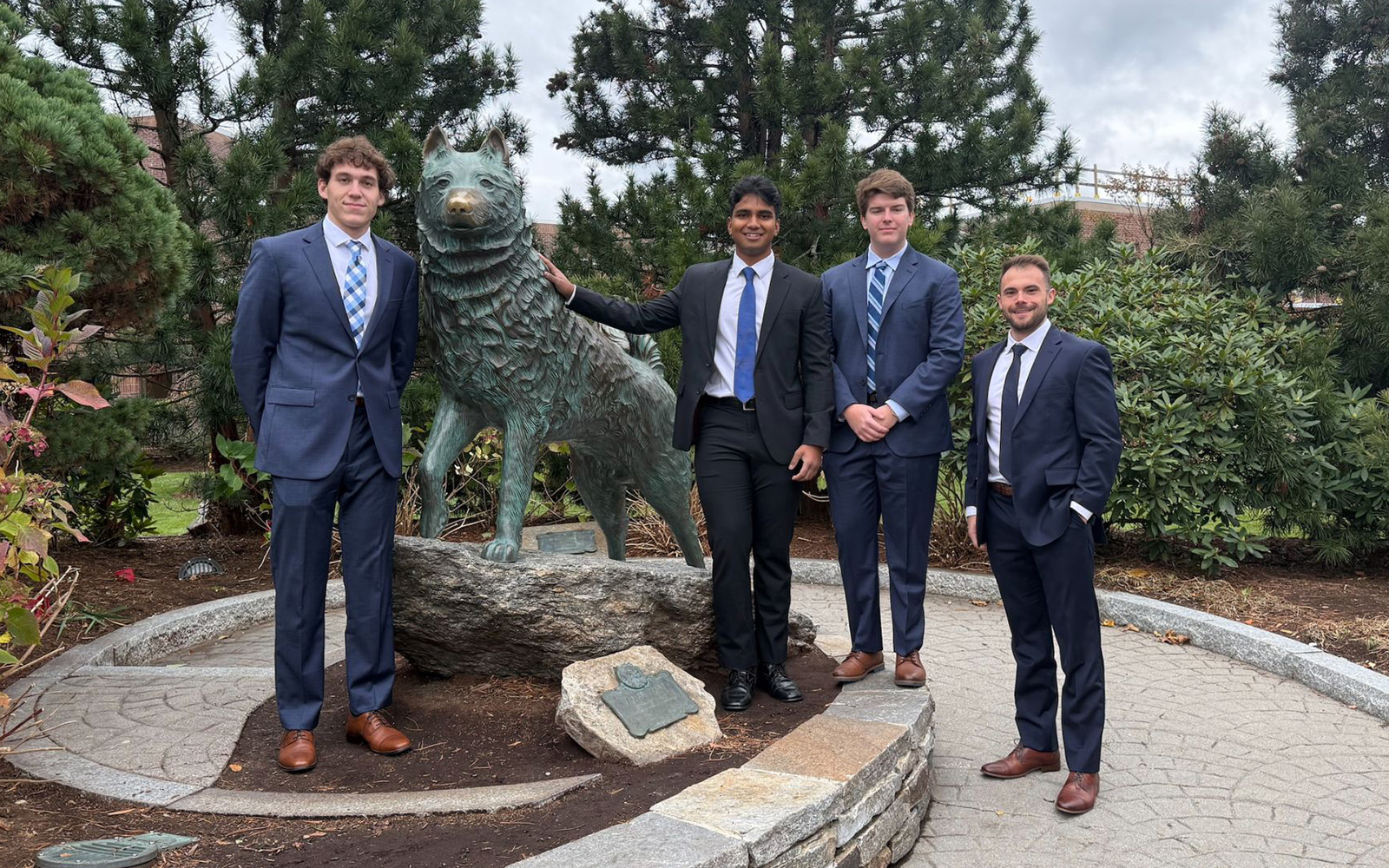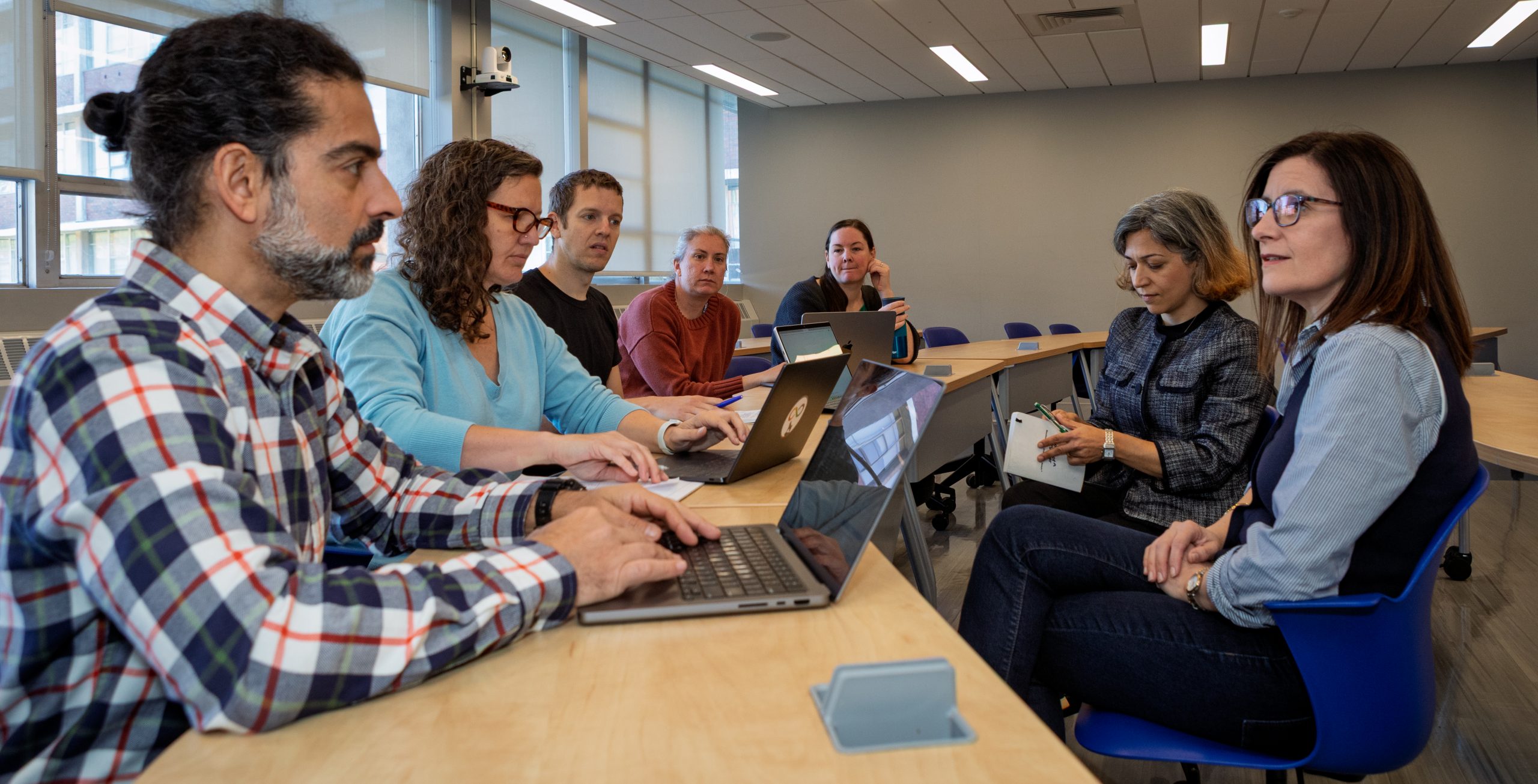“The final frontier” usually refers to outer space. But there’s a terrestrial environment that remains equally, if not more elusive – soil.
Soil is a complex biotic and abiotic system. One of the greatest challenges with studying soil is that because these systems are underground, scientists can’t always see what is going on.
A group of UConn researchers from the School of Engineering and the College of Agriculture, Health and Natural Resources have teamed up to advance this scientific field through a $700,000 grant from the National Science Foundation’s Industry-University Cooperative Research Centers (IUCRC) Program.
The University of Southern California is the lead on this SoilTech IUCRC Center project. UConn, the University of Washington, Seattle, and Iowa State University are the collaborating university sites.
The UConn team includes Baikun Li, professor of civil and environmental engineering; Yu Lei, profess of chemical and biomedical engineering; Maria Chrysochoou, professor and department head of civil and environmental engineering; Haiying Tao, assistant professor of soil nutrient management and soil health; Sydney Everhart, associate professor and department head of plant science and landscape architecture; and Matthew Stuber, assistant professor of chemical and biomolecular engineering.
One of the defining aspects of the newly established Center for Soil Technologies (SoilTech) is that it will be driven by industry need through industry investment. After working to recruit industry partners over the past two years, the Center will now begin working on its first set of applied research questions.
Each year, industry members serving on the industry advisory board will develop a call for research proposals based on what they view as the most pressing needs and then choose which proposals to fund. This model supports the development of prototypes for commercialization.
“This is a really nice collaboration between engineering and agriculture,” Li says. “My thought is that this Center will be the starting point for other, exciting research.”
My thought is that this Center will be the starting point for other, exciting research — Baikun Li
One of UConn’s chief contributions to this effort is the soil sensors developed by Li and Lei.
While there have been great advancements in sensor technology for biomedical applications and measuring water parameters in recent years, these sensors don’t work well when applied to soil.
“Normally, the reason a sensor that works well in the water does not work well in soil is because the soil is dry,” Li explains. “And the ion contaminants that we target can’t migrate to the sensor.”
This makes it difficult for scientists to collect real-time soil measurements as they usually need to transport samples to a lab for analysis.
No one had been able to design an effective and affordable sensor for soil until Li created a sensor encased in hydrogel. The hydrogel effectively absorbs water from the soil, even when it is very dry. This allows the ions of interest, in this case nitrate and ammonium to move to the sensor so the sensor can collect an accurate reading.
This research was published as a cover in Environmental Science and Technology last year.
The team initially targeted nitrogen because nitrogen content is a major environmental issue. Nitrogen from fertilizers can contaminate water, posing significant threats to the health of humans and non-human ecosystems.
This innovation supports the development of precision agriculture, an approach that focuses on applying fertilizers or biological controls (like pesticides) only in the areas that need it, when they need it. This decreases the accumulation of dangerous chemicals, promotes plant health, and helps farmers save money.
Chrysochoou recognizes the vital impacts of this SoilTech Center for the emerging soil health problems and urban farming in Connecticut.
Through this grant, Li will calibrate and evaluate the sensors in the lab, and then move into field sites. Her team will conduct field studies through multiple seasons. Li will then develop an algorithm designed to support precision agriculture.
Tao will work with local farmers to teach them how to use the sensors. This is a crucial part as the sensors’ promise to enable precision agriculture can only be realized if farmers utilize them.
“For farmers, the application of the sensors will drive precision agriculture decisions and that will be really helpful for them to reduce input which will reduce their costs and minimize environmental impact,” Haiying Tao says.
Everhart conducts systems-level analyses on how pathogens are introduced or emerge from within a system. For her, these sensors could help uncover the soil conditions that give rise to different kinds of pests and provide guidance for better management practices.
“Agriculture is a huge, huge land area on the earth,” Everhart says. “So, any way we could make even small improvements may have a substantial gain over a very large system.”
Through these research projects, students and postdocs will have the opportunity to connect with national and global industry players as they work on questions directly relevant to this sector, creating a pipeline of scientists well-trained to work with industry.
“I think this kind of center could bridge the gap between academic research and industry need,” Lei says.



